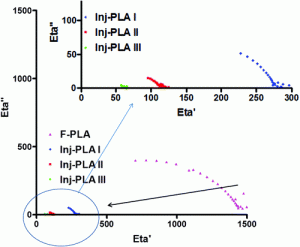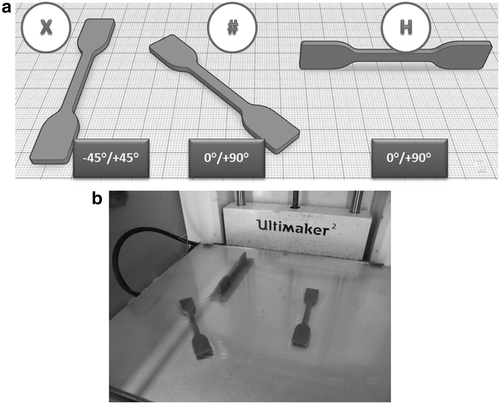 Comparisons are constantly being made between 3D printing and injection molding. Manufacturers of 3D printers and 3D printing materials strive to achieve the finish and detail that injection molding is known for, while enjoying the speed and cost benefits of 3D printing. In a study entitled “Toward a Better Understanding of the Fused Deposition Modeling Process: Comparison with Injection Molding,” a group of researchers works to optimize the process parameters of 3D printed parts, comparing them with samples made with injection molding.
Comparisons are constantly being made between 3D printing and injection molding. Manufacturers of 3D printers and 3D printing materials strive to achieve the finish and detail that injection molding is known for, while enjoying the speed and cost benefits of 3D printing. In a study entitled “Toward a Better Understanding of the Fused Deposition Modeling Process: Comparison with Injection Molding,” a group of researchers works to optimize the process parameters of 3D printed parts, comparing them with samples made with injection molding.
The work focuses on improving the tensile mechanical properties of the 3D printed samples and investigating the impact of the process on the rheological and thermal properties. In particular, the researchers direct attention toward the printing order of three-dimensional samples, printed in a batch or individually.
The researchers used PLA for both the 3D printed and injection molded samples. Thermogravimetric analysis (TGA) was performed on the samples, as was calorimetric analysis. Two sets of samples were created for comparison, with the 3D printed samples being printed on an Ultimaker 2 3D printer.
“The influence of the raster angle (the direction of raster with respect to the loading stress direction), build orientation (horizontal or vertical), and printing order on the mechanical properties of PLA were investigated,” the researchers state. “Default FDM parts in Ultimaker2 were made with a crisscross raster in which the orientation of the beads alternated from +45° to −45° from layer to layer. As the FDM software defaults to this raster, this orientation could be considered a [0°/90°] orientation if the part were rotated through 45°.”
Dumbell samples were printed with three different orientations. X samples were constructed horizontally with a raster orientation of 45°/+45°, # samples were built horizontally with a raster orientation of 0°/+90°, and H samples were manufactured vertically with a raster orientation of 0°/+90°. The first set of samples, consisting of 15 prints, was manufactured simultaneously, while the second set was manufactured one by one. Rheological measurements and tensile tests were then carried out.
Before performing the mechanical tests, the samples were weighed.
“There were three different weight values; the specimens produced by injection molding demonstrated a higher weight compared with specimens made by FDM (1.5 g),” the researchers continue. “The FDM specimens printed simultaneously demonstrated the lowest weight value (1.41 and 1.38 g) and the FDM specimens printed individually demonstrated a moderate weight value (1.44 and 1.42 g). This difference in weight between 3D specimens may be explained by intermolecular diffusion at the interface of filament layers.”
Since the weight of the specimens varied, the mechanical properties were also impacted.
“It can be noted that injection-molded samples have highest tensile modulus (1580 MPa), with a large standard deviation (±130) because of the heterogeneous thermal degradation between the different samples,” the researchers add. “Simultaneously printed samples reach a maximum of 1110 MPa for #-PLA, while a minimum of 984 MPa was recorded for X-PLA. This can be related to the fact that for samples printed at raster angles of 0°/90°, the filaments were oriented parallel to the load direction, producing the strongest samples. In samples printed at −45°/+45°, there was a finite angle between the printed microstructural elements and the load direction.”
PLA has low thermal stability, so during injection molding, the samples were subject to major thermal degradation. The 3D printed samples did not suffer the same fate due to the short time the filament was in the nozzle. The researchers found that the samples 3D printed individually had better mechanical properties than those 3D printed simultaneously.
“In the same time, samples with a raster angle of 0°/90° demonstrated better properties than samples produced with a raster angle of −45°/+45°,” the researchers conclude. “Vertically printed samples with a raster angle of 0°/90° demonstrate interesting results, but these samples need a support during manufacturing and then require postprocessing due to the burr generated.”
Authors of the paper include Haroutioun Askanian, Daniel Muranaka de Lima, Sophie Commereuc and Vincent Verney.
Discuss this and other 3D printing topics at 3DPrintBoard.com or share your thoughts below.
Subscribe to Our Email Newsletter
Stay up-to-date on all the latest news from the 3D printing industry and receive information and offers from third party vendors.
You May Also Like
Profiling a Construction 3D Printing Pioneer: US Army Corps of Engineers’ Megan Kreiger
The world of construction 3D printing is still so new that the true experts can probably be counted on two hands. Among them is Megan Kreiger, Portfolio Manager of Additive...
US Army Corps of Engineers Taps Lincoln Electric & Eaton for Largest 3D Printed US Civil Works Part
The Soo Locks sit on the US-Canadian border, enabling maritime travel between Lake Superior and Lake Huron, from which ships can reach the rest of the Great Lakes. Crafts carrying...
Construction 3D Printing CEO Reflects on Being Female in Construction
Natalie Wadley, CEO of ChangeMaker3D, could hear the words of her daughter sitting next to her resounding in her head. “Mum, MUM, you’ve won!” Wadley had just won the prestigious...
1Print to Commercialize 3D Printed Coastal Resilience Solutions
1Print, a company that specializes in deploying additive construction (AC) for infrastructure projects, has entered an agreement with the University of Miami (UM) to accelerate commercialization of the SEAHIVE shoreline...






























